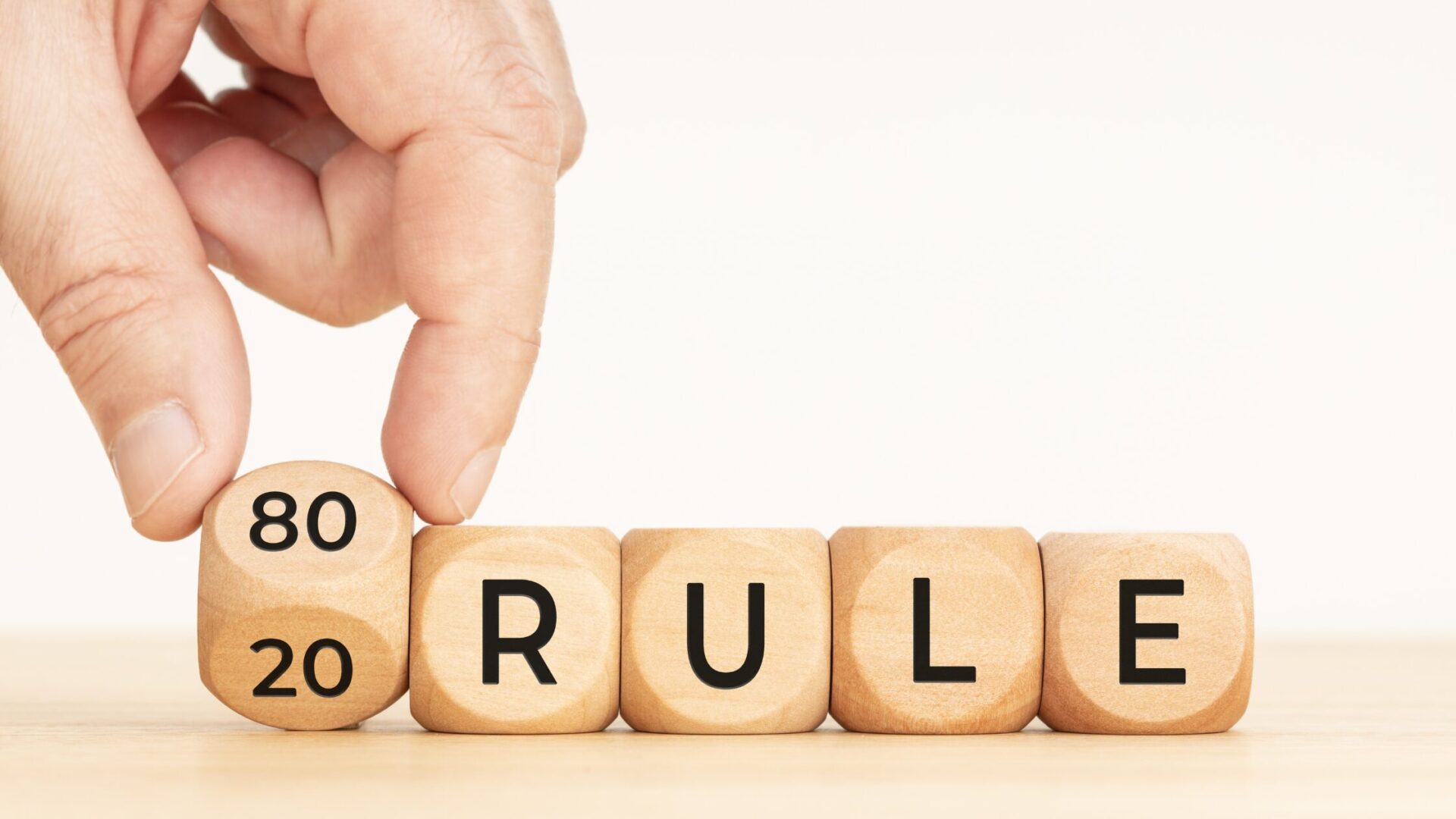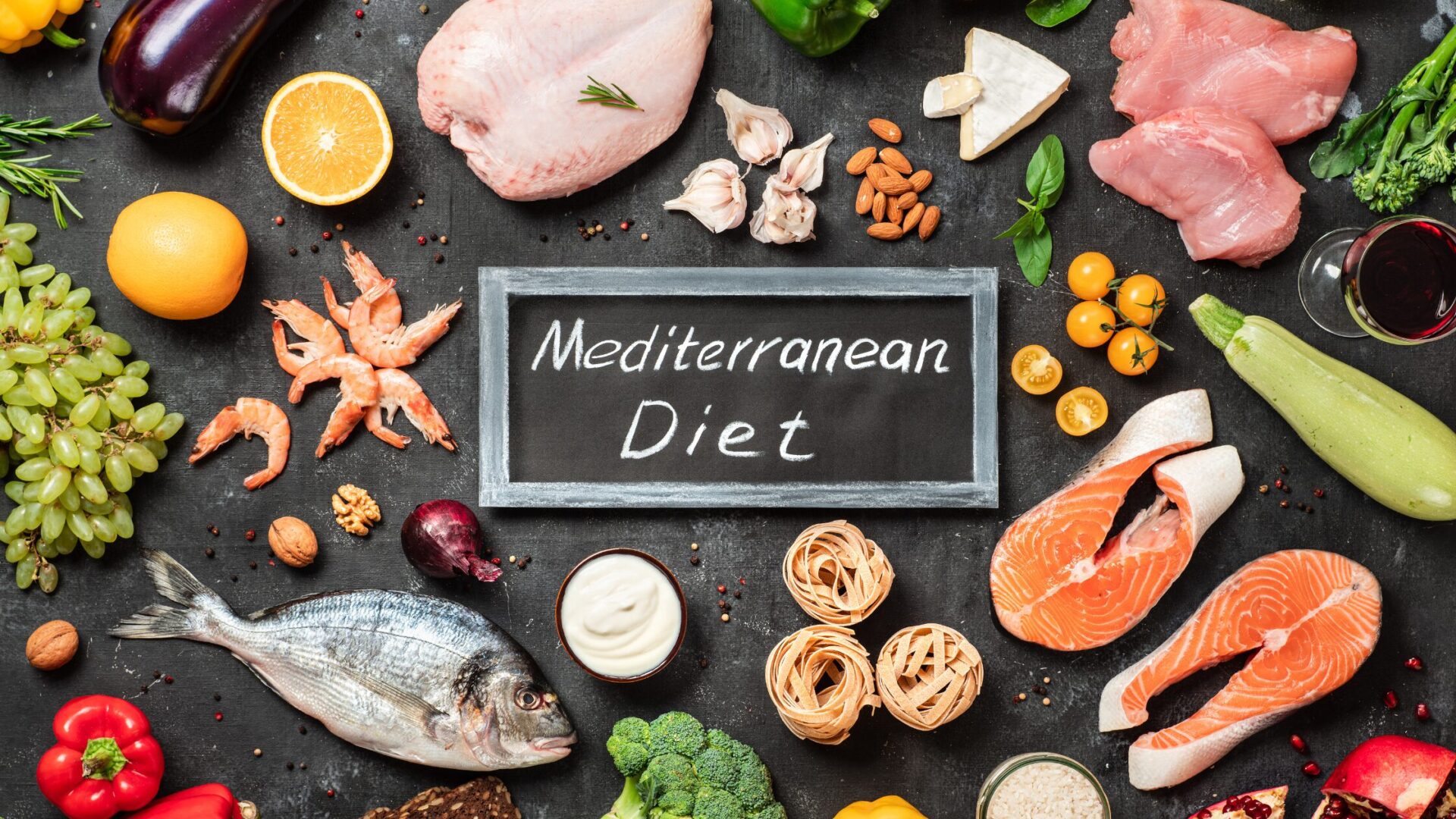What is the 80/20 rule diet? Benefits of the 80/20 rule diet
Introduction – The 80/20 Rule Diet:
In today’s health-conscious world, with a plethora of diet plans and nutritional advice available, the 80/20 Rule Diet has emerged as a popular choice among individuals seeking a balanced, sustainable approach to eating.
- Consume wholesome, nutritious foods 80% of the time
- Indulge in your favorite treats for the remaining 20%
- Acknowledge cravings for flavors beyond “healthy” foods
- Sustain long-term commitment to health without drastic dietary restrictions
Why is this diet becoming a phenomenon? Imagine a dieting approach where you don’t have to say ‘goodbye’ forever to your cherished chocolate cake or your favorite crispy fries. Fascinating, isn’t it? Stay with us as we delve deeper into the 80/20 Rule Diet and how it could be your game-changer for 2024.
Definition of the 80/20 Rule Diet
The 80/20 Rule Diet is a lifestyle choice rather than a traditional diet plan. This approach emphasizes balanced eating where:
- 80% of your diet consists of nutrient-dense, healthy foods
- The remaining 20% can be comprised of any foods you enjoy without any restrictions
This diet plan encourages the idea of moderation, not deprivation.
Overview of the 80/20 Rule Diet
With the 80/20 Rule Diet, you are not required to eliminate any food groups from your diet. Instead, you’re encouraged to:
- Focus on consuming a variety of fruits, vegetables, lean proteins, whole grains, and healthy fats for the majority of your meals
- Allow yourself to enjoy indulgences or less nutritious foods about 20% of the time
The goal is to achieve a balance that promotes overall health and wellness while still catering to cravings and personal preferences. This balance is what makes the 80/20 Rule Diet sustainable in the long run.
Philosophy Behind the 80/20 Rule Diet

The underlying philosophy of the 80/20 Rule Diet revolves around the principle of balance and sustainability, eliminating the stress associated with strict diets. Here are the key concepts:
Sustainability Over Quick Fixes:
The 80/20 Rule Diet isn’t about rapid, drastic weight loss but about creating a sustainable, long-term dietary plan that can be maintained over a lifetime.
Balance, Not Deprivation:
The 80/20 approach allows for the occasional indulgence, recognizing that completely depriving oneself of certain foods can lead to binge eating and disrupt healthy habits.
Fostering Mindful Eating:
The 80/20 Rule encourages individuals to be mindful of what they are eating, promoting a conscious understanding of nutritional intake instead of mindless eating.
Encouraging Variety:
This diet doesn’t limit food groups, it encourages consuming a wide array of foods, fostering a diverse and nutritionally rich diet.
Health Beyond Weight Loss:
While weight loss might be a benefit, the main aim of the 80/20 Rule Diet is overall health and wellness, promoting a healthier relationship with food.
Distinction from Traditional Diets
Traditional diets often involve strict guidelines and food restrictions and can lead to a distorted relationship with food. They are often designed for rapid weight loss rather than long-term health and sustainability. Here’s how the 80/20 Rule Diet stands apart:
No Food Groups Are Off-Limits:
Unlike many traditional diets, the 80/20 Rule Diet does not completely eliminate any food groups. This approach ensures a wide variety of nutrients and reduces the potential for nutrient deficiencies.
No Calorie Counting:
While traditional diets often require meticulous counting of calories, the 80/20 Rule Diet emphasizes the quality of the food over the quantity. It encourages mindful eating rather than a mathematical approach to meals.
Promotes a Healthy Relationship with Food:
Traditional diets can associate guilt with indulging in favored foods. In contrast, the 80/20 Rule Diet allows for moderation in enjoyment, reducing feelings of guilt and fostering a healthier mindset towards food.
Long-Term Sustainability:
While most traditional diets are difficult to stick with over the long term, the 80/20 Rule Diet is designed for sustainability. It’s an eating pattern that can be followed for life rather than a short-term solution.
Encourages Overall Wellness:
Many traditional diets are primarily focused on weight loss, often at the expense of overall health. The 80/20 Rule Diet places an equal emphasis on overall health and wellness, not just weight management.
How the 80/20 Rule Works

The 80/20 Rule Diet operates on a simple yet effective principle: eat nourishing, healthful food 80% of the time and allow yourself more flexibility for indulgence 20% of the time. It’s a ratio that offers a balance between optimal nutrition and enjoying your favorite treats.
The 80% Healthy Eating Component:
For the majority of your meals, aim to consume nutrient-rich foods. This includes fruits, vegetables, lean proteins, whole grains, and healthy fats. This segment of the diet focuses on fueling your body with the nutrients it requires for optimal functioning. It encourages a diet rich in fiber, vitamins, and minerals and low in processed foods and added sugars.
The 20% Indulgence Component:
The balance comes with 20% of your diet, where you’re allowed to indulge in your favorite treats. Whether that’s a slice of pizza, a bar of chocolate, or a serving of creamy pasta, the choice is yours. This aspect of the diet recognizes the importance of satisfaction and enjoyment in eating. It provides room for those foods you love, acknowledging that a sustainable diet doesn’t need to eliminate these entirely.
The beauty of the 80/20 Rule Diet is in this balance. It aims to create a healthy eating pattern that is enjoyable and sustainable rather than restrictive and temporary. It’s not about being perfect all the time but striving for a generally nutrient-dense intake while still making space for the occasional indulgence. This approach can help to reduce feelings of deprivation and make your healthy eating habits more sustainable in the long term.
Examples of the 80/20 Rule in Practice
The 80/20 Rule Diet is more about the overall dietary pattern rather than individual meals or days. Here are some examples of how to apply this principle:
A Day in the Life
- 80% Healthy Eating:
- Breakfast: Oatmeal with fresh berries and a sprinkle of chia seeds
- Lunch: Grilled chicken salad with a wide variety of vegetables and olive oil dressing
- Snacks: A handful of nuts, an apple, or carrot sticks with hummus
- Dinner: Baked salmon with quinoa and steamed broccoli
- 20% Indulgence:
- Dessert: A small piece of dark chocolate or a scoop of your favorite ice cream
A Week in the Life
- 80% Healthy Eating:
- 5 days of the week are comprised of meals primarily made up of whole, unprocessed foods with lots of fruits, vegetables, lean proteins, and whole grains.
- 20% Indulgence:
- 2 days of the week allow for a little more flexibility. You might enjoy a dinner out with friends, a piece of birthday cake at a party, or a homemade cookie from the batch you baked with your kids.
Flexibility and Personalization in the 80/20 Rule Diet

An important attribute of the 80/20 Rule Diet is its flexibility and allowance for personalization. Unlike traditional diets that impose strict and specific guidelines, the 80/20 Rule Diet allows for individual preferences and lifestyle considerations.
Flexibility:
The 80/20 Rule Diet is designed to adapt to your lifestyle, not the other way around. It gives you the freedom to decide when and how you want to allocate the 20% indulgence. It could be a daily treat or saving up for a weekend social gathering. The choice is yours, making it easier to stick to in the long run.
Personalization:
The diet can be tailored to accommodate personal dietary preferences or restrictions. Whether you’re vegetarian, vegan, gluten-free, or have specific food allergies, you can still follow the 80/20 rule. The key is to fill the 80% with the healthiest possible options within your dietary parameters and enjoy the 20% in a way that brings you satisfaction and joy.
This flexibility and ability for personalization is what makes the 80/20 Rule Diet sustainable and approachable, allowing it to fit seamlessly into various lifestyles and dietary needs. This is not a one-size-fits-all approach but rather a framework that can be customized to meet individual health goals and food preferences, making it a versatile tool for pursuing long-term health and wellness.
Benefits of the 80/20 Rule Diet
Adopting the 80/20 Rule Diet comes with a host of benefits, many of which extend beyond mere physical health.
1- Sustainability:
One of the main advantages of the 80/20 rule is its sustainability. Because it is not overly restrictive and allows for indulgences, it’s more likely to be maintained over a long period, leading to lasting health improvements.
2- Psychological Well-being:
The flexibility of the 80/20 Rule Diet can significantly improve psychological well-being. It eliminates the guilt often associated with “cheat meals” and fosters a healthier relationship with food.
3- Weight Management:
Because the diet focuses on consuming nutrient-dense food 80% of the time, it can assist in weight management. Consuming a diet rich in whole foods can help maintain a healthy weight without the stress of counting calories.
4- Reduced Risk of Chronic Diseases:
By promoting a diet filled with fruits, vegetables, lean proteins, and whole grains, the 80/20 rule can reduce the risk of chronic diseases such as heart disease, diabetes, and certain types of cancer.
5- Increased Energy Levels:
The 80/20 rule encourages the consumption of foods that provide sustained energy, helping to maintain productivity and reduce fatigue throughout the day.
Overall, the 80/20 Rule Diet is a balanced dietary approach that encourages long-term, sustainable health improvements while acknowledging the importance of enjoying food and maintaining a positive mindset.
Implementing the 80/20 Rule Diet in Daily Life

Adopting the 80/20 Rule Diet in your daily life is fairly straightforward once you grasp the fundamental principles. Here are some practical tips to help you navigate this dietary approach:
- Plan Your Meals: Meal planning can help you ensure that 80% of your food intake is nutrient-dense. Dedicate some time each week to plan your meals and snacks. Preparing and storing meals in advance can be a great way to stay on track.
- Practice Mindful Eating: Pay attention to your hunger and fullness cues. Eat when you’re truly hungry, and stop when you’re comfortably full. This can prevent overeating during your 20% indulgence.
- Choose Quality Indulgences: For your 20% indulgence, opt for quality over quantity. Instead of eating large portions of low-quality treats, indulge in smaller amounts of high-quality treats that you really enjoy.
- Stay Hydrated: Don’t forget the importance of hydration. Water plays a crucial role in nearly every bodily function, and staying well-hydrated can help control hunger and maintain energy levels.
- Stay Active: Regular physical activity complements the 80/20 Rule Diet by helping regulate your appetite, boost your metabolism, and improve your overall health.
Strategies for Meal Planning and Grocery Shopping
Adopting the 80/20 Rule Diet efficiently involves strategic meal planning and grocery shopping. Below are some strategies that can assist you in this regard.
Meal Planning Strategies:
- Create a Weekly Menu: At the start of each week, create a menu that includes meals and snacks for each day. Be sure to incorporate a balance of nutrients into each meal.
- Include Variety: Make sure to add variety to your meals to avoid boredom. Try different lean proteins, whole grains, fruits, and vegetables each week.
- Prepare in Advance: When possible, prepare meals in advance. This can save time during the week and ensure you stick to your healthy eating plan.
Grocery Shopping Strategies:
- Make a List: Before heading to the supermarket, prepare a detailed list of what you need based on your weekly menu. This can prevent impulse purchases.
- Shop the Perimeter: Most whole foods are located around the perimeter of the supermarket. Start there to fill your cart with healthy options before moving to the inner aisles.
- Read Labels: Always read nutrition labels to ensure you’re choosing the healthiest options. Look out for hidden sugars, excessive sodium, and unhealthy fats.
Navigating Dining Out and Social Situations
While maintaining the 80/20 Rule Diet at home may seem straightforward, dining out and social situations can present unique challenges. However, with a few strategies, you can continue to follow the diet principles even when eating out.
- Research in Advance: If you know where you’ll be dining, research the restaurant’s menu in advance to determine which options align best with your dietary plan.
- Balance Your Plate: Aim to make half your plate vegetables, a quarter lean proteins, and a quarter whole grains or other complex carbohydrates. This can help ensure you’re getting a balanced meal.
- Opt for Quality Indulgences: If you decide to indulge, opt for a high-quality treat that you really enjoy. Remember, it’s about enjoying your indulgence, not eating as much as possible.
- Practice Portion Control: Restaurant portions are often much larger than what we need. Consider sharing a meal with someone else or asking for a to-go box right away and splitting the meal in half.
- Communicate Your Dietary Needs: Don’t be afraid to express your dietary needs to your server. Most restaurants are accommodating and can modify dishes to meet your requirements.
Social situations can be a bit trickier, but planning and communication are key. If you’re going to a social gathering, consider eating a small, healthy snack before you go so you’re not overly hungry. Offer to bring a dish to share that fits your dietary rules. If you do indulge, remember that it’s perfectly okay and part of your diet’s flexibility. The important thing is to enjoy the social event and not to stress over your food choices.
Potential Challenges and How to Overcome Them
Adopting a new dietary approach like the 80/20 Rule Diet can come with its own set of challenges. However, understanding these challenges and preparing for them can help you stay committed and achieve your health goals.
Understanding Portion Control
One common challenge is understanding portion control. It can be difficult to estimate what constitutes a reasonable portion, especially when dining out or eating pre-packaged foods.
- Solution: Consider using measuring cups or a digital food scale at home to get a better understanding of serving sizes. Over time, you’ll be better able to visually estimate portions. When dining out, remember that restaurant portions are often double or even triple a normal serving size. Don’t feel pressured to finish everything on your plate – it’s perfectly acceptable to take leftovers home.
Avoiding Overindulgence
The 20% allowance for indulging can sometimes lead to overindulgence, especially with high-calorie foods or sweets.
- Solution: Remember, the goal is quality over quantity. Choose treats you truly enjoy and savor them, rather than indulging in large amounts of less satisfying options. If you find it difficult to stop eating once you’ve started, try portioning out your treats in advance and putting the rest away to minimize temptation.
Staying Motivated
Staying motivated can be a challenge, especially when progress seems slow.
- Solution: Keep your focus on the long-term benefits of a balanced diet rather than quick fixes. Recognize that every healthy choice you make brings you one step closer to your goals. Celebrate your small victories, and don’t be too hard on yourself if you slip up. Remember, the 80/20 Rule Diet is about balance and sustainability, not perfection.
Conclusion
In conclusion, the 80/20 Rule Diet is a balanced and sustainable approach to nutrition that promotes overall health while allowing for occasional indulgences. The diet encourages healthy eating for 80% of the time and allocates 20% for your favorite treats. Key strategies for success include strategic meal planning, smart grocery shopping, navigating dining out and social situations with care, and overcoming potential challenges like understanding portion sizes, avoiding overindulgence, and staying motivated. This dietary approach is not about attaining perfection but rather about achieving a balance that can be maintained long-term. If you’re seeking a flexible diet plan that aligns with a healthy lifestyle while allowing room for enjoyment, the 80/20 Rule Diet could be an excellent choice for you.



